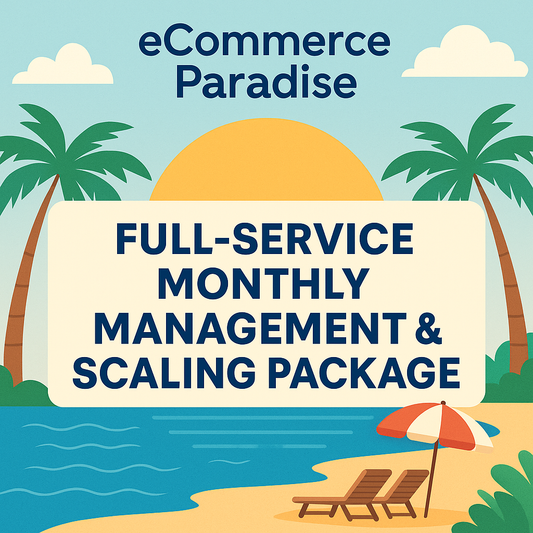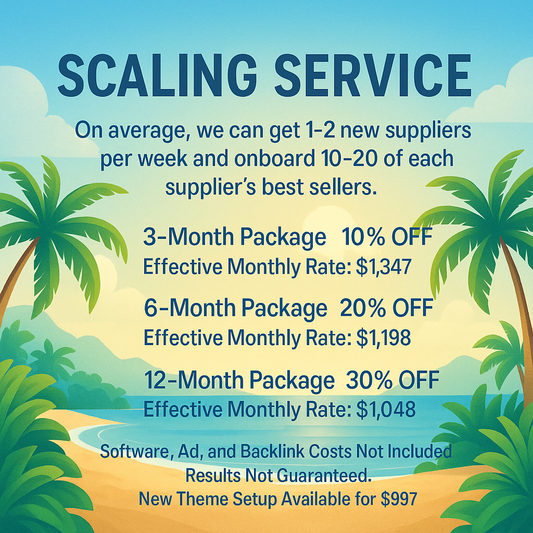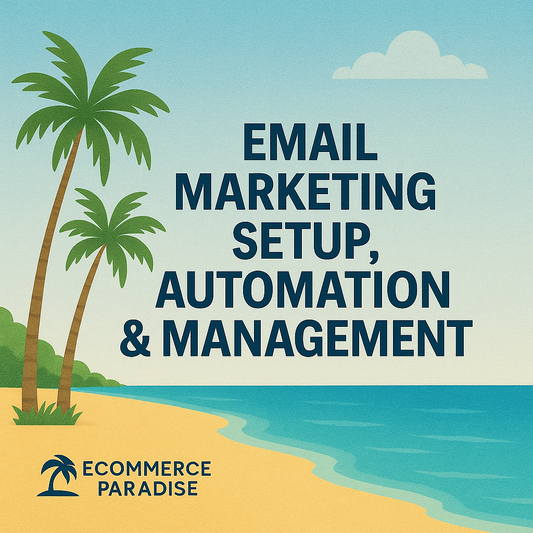
Best Checking Accounts: Top Options for Every Financial Need
The best checking accounts offer easy access to your money, low fees, and helpful features like mobile banking and free ATMs. Choosing the right account is an important step to help keep your finances safe and easy to manage—especially for those managing online businesses or focused on ecommerce SEO, where smooth financial operations are essential.
There are many options out there, and each one can be a little different. Some checking accounts come with extra perks, while others focus on keeping costs as low as possible.
With so many choices, it can be hard to know which checking account is best for everyday needs. This guide takes a close look at some of the top options to help everyone find a good fit.
Quick List: Best Checking Accounts
- Chase Total Checking
- Capital One 360 Checking
- BMO Smart Advantage Checking
- Key Smart Checking®
- Laurel Road Loyalty Checking
- TAB Spend
- Secure Banking
- Schwab High-Yield Investor Checking
- SoFi Checking and Savings
- Upgrade - Rewards Checking Plus
- Axos ONE® Checking
- Discover® Cashback Debit
- Quontic Bank High Interest Checking
- Bask Bank Interest Checking
- nbkc bank Everything Account
- ZYNLO Bank More Spending Account
- American Express Rewards Checking
What Is a Checking Account?
A checking account is a type of bank account used for everyday spending. It helps people manage money, pay bills, and make purchases in a safe and organized way.
Purpose and Benefits
Checking accounts are designed for regular transactions. People use these accounts to deposit paychecks, shop with debit cards, write checks, and withdraw cash from ATMs.
Main benefits include:
- Quick access to money
- Easy ways to pay bills
- Security from the bank or credit union
- Electronic payments and transfers
Most checking accounts, like Personal Checking Accounts, are insured by the FDIC or NCUA. This means up to $250,000 per person is protected if the bank fails.
Some accounts offer extra features. These might include mobile banking, automatic payments, and spending alerts. Parents can open joint checking accounts with their teens to teach money management.
How Checking Accounts Work
With a checking account, account holders can deposit money through direct deposit, cash, or check. They can access funds using debit cards, checks, online transfers, or ATM withdrawals.
Key features of most accounts:
| Feature | What It Means |
|---|---|
| Debit Card | Used for purchases and ATM withdrawals |
| Online Banking | Check account balances, pay bills, and transfer money online |
| Direct Deposit | Paychecks or benefits go straight into the account |
| Overdraft Options | Some accounts offer ways to handle spending more than the balance |
Most banks set limits on daily withdrawals or purchases for security. Some accounts charge monthly fees, but others do not if certain requirements are met, like keeping a minimum balance or setting up direct deposit.
Checking accounts are not meant for saving money long-term, as they may not pay interest or only offer very low rates.
Top Features of the Best Checking Accounts
The best checking accounts stand out because they offer helpful benefits and easy access to your money. They also keep fees low and provide useful digital tools for managing accounts.
Interest and Rewards Programs
Many top checking accounts, such as Ally Interest Checking or Discover Cashback Debit, pay interest or offer rewards. These accounts may give you a small percentage back on your balance or offer cashback for purchases. Look for annual percentage yield (APY) rates that are higher than 0.10% to get real value.
Some banks also run special promotions where you can earn bonuses for setting up direct deposit or making a certain number of debit transactions each month. Read the account terms so you know how to qualify.
Rewards Features Table:
| Account Name | Type | Example Reward |
|---|---|---|
| Ally Interest Checking | Interest | 0.25% APY |
| Discover Cashback Debit | Cashback | 1% cashback on purchases |
| Chase Total Checking | Bonus | Up to $200 sign-up bonus |
These programs can help your money go further, especially if you keep a higher balance or use your debit card often.
Account Fees and Accessibility
Fees can eat into your savings, so the best checking accounts keep them low or get rid of them completely. Look for accounts with no monthly maintenance fees, such as Capital One 360 Checking and SoFi Checking and Savings.
It’s also important to check for overdraft fees, ATM fees, and minimum balance requirements. Some banks, like SoFi, have no overdraft fees and do not require a minimum balance to avoid monthly charges.
Accessibility matters for managing your account. The best options let you open accounts online and offer customer support by phone, chat, or at branches. Chase and Bank of America provide large networks of branches and customer service.
ATM Access and Digital Tools
Free and easy ATM access is a must. Top banks offer large ATM networks or reimburse out-of-network ATM fees. For example, Ally Bank refunds up to $10 in ATM fees each month, and Capital One has a wide network of free ATMs.
Mobile banking apps and online tools help you manage money anywhere. Chime and SoFi offer apps for checking balances, paying bills, and depositing checks right from your phone. Useful features include instant transaction alerts, automatic savings, and budgeting tools.
Digital tools make it simple to track your spending, set up direct deposit, or send money to friends. Most of the best checking accounts support these options, which can save time and help you stay informed about your finances.
Ranking the Best Checking Accounts in 2025
Checking accounts in 2025 offer more perks and lower fees than ever. Customers have strong choices between accounts from national banks and those offered only online.
National Bank Accounts
Big banks like Chase and Capital One 360 Checking still lead in easy access and in-person support. Chase Total Checking offers a wide network of ATMs and branches but charges a $12 monthly fee unless certain balance or direct deposit requirements are met. Capital One 360 Checking stands out by eliminating most account fees and offering mobile banking features.
BMO Smart Advantage Checking and Key Smart Checking® provide competitive perks for those who need branch services. BMO does not charge a monthly fee, but some services may cost extra. Laurel Road Loyalty Checking is attractive for those wanting cashback with no monthly charges if simple activity requirements are met. TAB Spend and Chase Secure Banking focus on essential banking services and are good for those who want clear, predictable fees. Here is a quick look at some features:
| Account | Monthly Fee | Notable Perk |
|---|---|---|
| Chase Total Checking | $12 | Extensive ATM network |
| Capital One 360 Checking | $0 | No overdraft fees |
| BMO Smart Advantage | $0 | No minimum balance |
| Key Smart Checking® | $0 | Free bill pay |
Online-Only Checking Options
Online banks no longer just match big banks—they often beat them on fees and features. Schwab High-Yield Investor Checking offers global ATM fee refunds and no monthly charges, making it ideal for travelers. SoFi Checking and Savings pays cash back on some debit purchases and pays higher-than-average interest on balances. Upgrade - Rewards Checking Plus and Axos ONE® Checking give up to 2% cash back or strong APYs with few fees.
Discover® Cashback Debit is known for its 1% cashback with no monthly fee or minimum balance. Quontic Bank High Interest Checking and Bask Bank Interest Checking cater to those looking for interest payments without a lot of requirements. nbkc bank Everything Account combines checking and savings features, while ZYNLO Bank More Spending Account offers round-ups to help save automatically. American Express Rewards Checking features points-earning on debit purchases.
| Account | Monthly Fee | Notable Perk |
|---|---|---|
| Discover® Cashback Debit | $0 | 1% cashback |
| Schwab High-Yield Checking | $0 | Global ATM fee rebates |
| SoFi Checking & Savings | $0 | High APY + cash back |
| Axos ONE® Checking | $0 | Up to 2% cash back |
Comparing Account Types for Different Needs
Checking accounts fit many different goals and lifestyles. Some focus on earning rewards or interest, while others help students or people who are new to banking get started without paying extra fees.
High-Yield and Cashback Accounts
High-yield checking accounts are popular because they offer interest rates above the average. The Schwab high-yield investor checking account, for example, pays interest and also refunds ATM fees worldwide. This makes it a strong choice for travelers and people who want to grow their balance.
SoFi Checking and Savings gives a high annual percentage yield (APY), combining checking features with savings in one place. Bask Bank Interest Checking also offers a competitive rate, making it easier to earn money from balances kept in the account.
Cashback accounts like Discover® Cashback Debit reward spending instead of savings. Users can earn 1% cashback on up to $3,000 spent each month with their debit card. This is helpful for people who use their debit card often and want extra value from their daily purchases.
| Account Name | Key Benefit | Ideal For |
|---|---|---|
| Schwab high-yield investor | Interest + ATM fee refunds | Travelers, investors |
| SoFi Checking and Savings | High APY + easy transfers | Savers, online users |
| Discover® Cashback Debit | 1% debit cashback | Frequent card users |
| Bask Bank Interest Checking | Competitive interest | Balance builders |
Student and Beginner Accounts
Student and beginner checking accounts are designed for people with limited banking history. These accounts often have no monthly fee and no minimum balance requirements, making it easy to manage small amounts of money.
Banks may also offer features like simple budgeting tools, easy-to-use mobile apps, and automatic alerts for low balances. Some accounts, like SoFi Checking and Savings, offer both high APYs and no-fee structures, which can help students and beginners avoid extra costs.
Accounts targeting students usually accept a wide range of documents to verify student status. Customer service is often available online or by phone to help with questions about overdrafts, deposits, or setting up direct deposit. Some banks offer free access to ATMs to make cash withdrawals easy and affordable.
How to Choose the Right Checking Account
Choosing a personal checking account means looking closely at different features and rules. The best checking accounts match a person's needs and budget, so it is important to check for things like account fees and online tools.
Evaluating Fees and Minimum Balances
Many personal checking accounts charge fees each month. These can be as low as $5 or as high as $15. Some banks let people avoid this fee by keeping a certain amount of money, called a minimum balance, in their account.
It’s important to look at what counts toward the minimum balance. Some banks let direct deposits or linked savings count, while others do not. Overdraft fees and charges for extra services—like using out-of-network ATMs—can add up fast.
Comparing costs from different banks helps buyers choose the best checking account. Here is a simple way to look at fees and balances:
| Bank | Monthly Fee | Minimum Balance to Avoid Fee | Overdraft Fee |
|---|---|---|---|
| Bank A | $10 | $500 | $35 |
| Bank B | $7 | $1,000 | $34 |
| Credit Union | $0-$5 | $0-$500 | $28 |
Look for accounts that fit your spending habits to save money.
Assessing Online and Mobile Banking
Online and mobile banking are important to most people who use personal checking accounts today. These services let users check balances, send money, deposit checks, and pay bills without visiting a branch.
A strong mobile app can make banking easier and may include tools like account alerts or budgeting help. Some of the best checking accounts offer free mobile check deposit and 24/7 access. Security features, such as fingerprint logins and fraud alerts, are also key.
When picking an account, review app store ratings and try out online banking demos if available. Good digital tools can save time and prevent problems with managing money.















